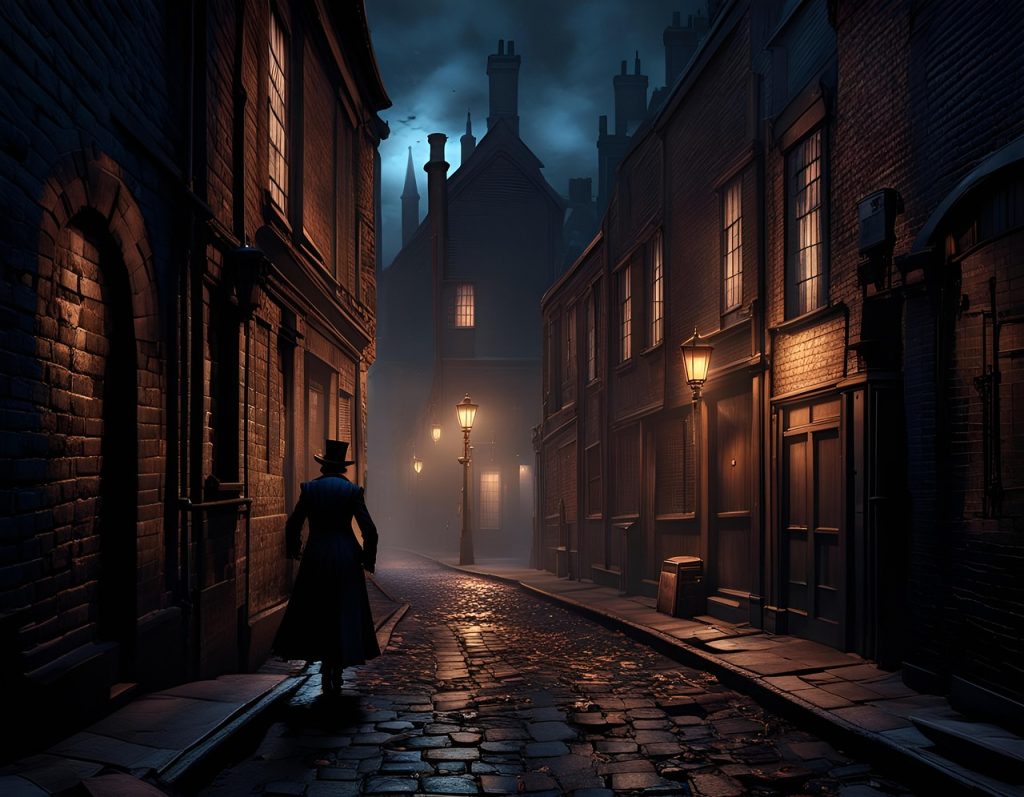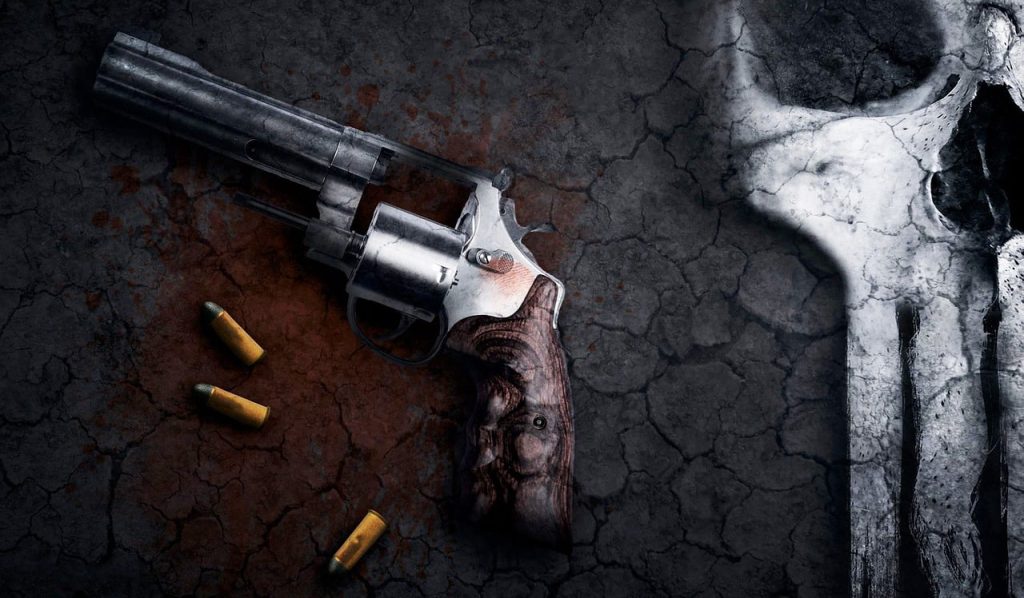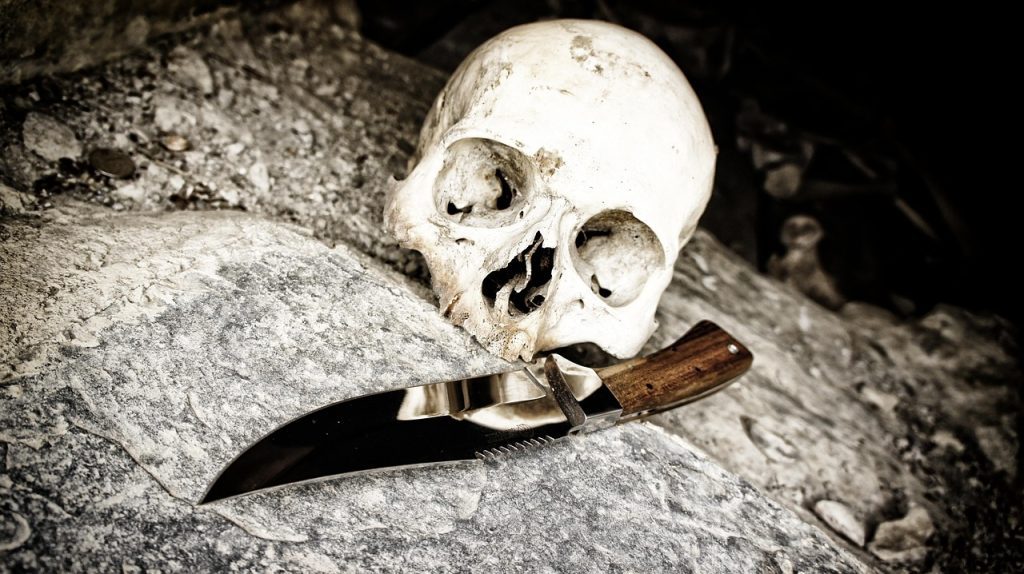The human mind is often captivated by the macabre, and few topics are as chillingly fascinating as the mystery of an unsolved murder. When a killer vanishes without a trace, leaving behind a trail of terror and unanswered questions, their legend only grows, cementing their place in the dark annals of criminal history. This page delves into 10 serial killers that were never caught, exploring some of the most infamous and elusive murderers who have haunted generations, leaving investigators and true crime enthusiasts in a perpetual state of wonder and dread.
From the fog-laden streets of Victorian London to the sun-drenched highways of California, these unidentified serial killers represent the ultimate challenge to justice. We’ll examine the chilling methodology of Jack the Ripper, whose brutal slayings in Whitechapel set the grim template for the modern serial killer. Journey through the cryptic communications of the Zodiac Killer, whose ciphers and taunts baffled police and codebreakers for decades. Discover the tragic stories behind the “Double Initial” murders, where a sinister pattern of victims with matching initials terrified upstate New York. Each case is a testament to a predator’s ability to evade capture, leaving behind a legacy of fear and a haunting reminder that some monsters truly do disappear into the darkness.
We’ll explore the unsettling “care” shown by the Oakland County Child Killer , the racial neglect that plagued the Freeway Phantom investigation , and the surgical precision of the Cleveland Torso Murderer. The “Phantom Killer” of Texarkana paralyzed a town with fear , while the Servant Girl Annihilator terrorized Austin in the 1880s. Finally, the Monster of Florence shattered Italy’s peace for over two decades. Join us as we explore the disturbing details and lingering questions surrounding these ten serial killers who were never brought to justice.
10. Jack the Ripper: The Butcher of Whitechapel

London, 1888. The foggy streets of Whitechapel became the hunting ground of a killer whose brutality shocked the world—and whose identity remains a mystery over a century later. Jack the Ripper is arguably the most infamous unsolved serial killer of all time, earning his place among the most chilling serial killers that were never caught.
A Killing Spree That Terrorized a City
Jack the Ripper is believed to have murdered at least five women—Mary Ann Nichols, Annie Chapman, Elizabeth Stride, Catherine Eddowes, and Mary Jane Kelly—in just a few months. All were sex workers, and all were found mutilated in grotesque, ritualistic ways. The killer showed knowledge of human anatomy, suggesting a background in medicine or butchery.
What made the Ripper case especially haunting were the taunting letters sent to newspapers and the police. Signed with the chilling moniker “Jack the Ripper,” these letters dripped with arrogance and glee over the chaos he had caused. The “From Hell” letter, accompanied by a piece of human kidney, remains one of the most disturbing correspondences ever received by law enforcement.
Theories Abound, But Truth Evades
Over 130 years later, countless theories have been proposed—blaming everyone from royal conspirators to obscure medical students. Yet no suspect has ever been definitively linked to the crimes. The case set the template for the modern serial killer and still captures the morbid fascination of criminal profilers, historians, and armchair detectives alike.
Jack the Ripper remains a haunting reminder that evil can vanish without a trace—and sometimes, justice never arrives.
9. The Zodiac Killer: The Ciphered Phantom of California

Jump forward nearly a century from Whitechapel to the turbulent streets of late 1960s California, and we meet another cryptic monster: The Zodiac Killer. More than just a murderer, the Zodiac was a showman of terror—taunting the media, mocking the police, and cloaking himself in cryptograms that still stump codebreakers today.
Killings in the Shadows
Between 1968 and 1969, the Zodiac claimed responsibility for at least five brutal murders across Northern California. Couples parked in cars. A lone cab driver. The attacks were seemingly random, violent, and calculated.
But it wasn’t the murders alone that terrified the public—it was the killer’s twisted game. The Zodiac mailed letters to local newspapers, including encrypted ciphers, demanding they be published or more people would die. One cipher, the Z340, went unsolved for over 50 years before a team of amateur codebreakers finally cracked it in 2020. Its chilling message? A denial of fear and a desire for fame from beyond the grave.
A Trail Gone Cold
Despite several close calls and a lineup of suspects that included schoolteachers, military veterans, and reclusive eccentrics, the Zodiac was never identified. His final confirmed letter came in 1974, though he claimed to have killed 37 people—far more than the police could ever confirm.
The Zodiac’s mix of violence, cryptography, and media manipulation has made him a haunting figure in the annals of crime. He represents the archetype of the serial killer as enigma—a brilliant, deranged puppeteer dancing just out of reach.
He remains one of the most notorious serial killers who were never apprehended, and one of the most fascinating for both investigators and pop culture.
8. The Doodler: The Silent Stalker of San Francisco’s LGBTQ+ Scene

In the shadowy corners of 1970s San Francisco, a killer was hunting—and he was sketching portraits before striking. Known only as The Doodler, this elusive predator targeted gay men, leaving behind a string of brutal murders and a trail that would go cold for decades.
Today, he’s one of the most disturbing cold case serial killers still out there—his identity unknown, his motive a mystery, and his case haunting investigators nearly 50 years later.
A Killer with a Pencil and a Knife
Between January 1974 and September 1975, at least five men were found murdered—stabbed repeatedly, often left in secluded areas like Ocean Beach and Golden Gate Park. Authorities believe the killer would lure his victims from bars or clubs in the Castro district by sketching their portraits, earning him the nickname The Doodler.
Each victim was found with similar wounds, suggesting the work of a single, methodical killer. And yet, no arrest was ever made.
A Community Silenced by Fear
What makes this case even more tragic is that potential witnesses were reportedly unwilling to testify due to the stigma surrounding homosexuality at the time. Among them? A public figure and a well-known entertainer—both allegedly survived attacks by the Doodler but feared coming forward would end their careers.
In an era of discrimination and silence, the Doodler exploited a community already on the margins, slipping through the cracks of a justice system unequipped—and in many ways, unwilling—to protect them.
Still a Threat?
Though dormant for decades, the case was reopened by the San Francisco Police Department in recent years, with new DNA technology and a reward offered for information. But despite renewed interest, The Doodler remains at large—one of the eeriest and most unsettling cold case serial killers of the 20th century.
7. The Alphabet Killer/Double Initial Murders

Sometimes, it’s the pattern that makes a killer unforgettable—and in the case of the Alphabet Killer, the pattern was both horrifying and hauntingly specific. Known also as the Double Initial Murders, this series of slayings struck fear into upstate New York in the early 1970s, and to this day, remains one of the most disturbing cases involving unidentified serial killers.
A Sinister Signature
Between 1971 and 1973, three young girls were abducted, assaulted, and murdered near Rochester, New York. The victims—Carmen Colon, Wanda Walkowicz, and Michelle Maenza—all shared the eerie coincidence of having first and last names beginning with the same letter. Even more chilling? Each girl’s body was found in a town starting with the same letter as her initials: Colon in Churchville, Walkowicz in Webster, and Maenza in Macedon.
It was a detail that turned the case from tragic to truly terrifying.
A Frustrating Lack of Evidence
Despite intensive investigations and a few suspects—including a fireman and a known child molester—no one was ever charged. The killer’s signature, his victims, and the precision of the abductions led many to believe this was not the work of chance, but of a calculating, ritualistic mind.
Authorities never confirmed whether the pattern was intentional or coincidental, but the case captivated national attention and remains a terrifying example of a predator hiding in plain sight.
The Legend of an Unsolved Pattern
The Double Initial Murders continue to baffle criminologists and amateur sleuths alike. Was it a single killer with a chilling MO? Or multiple cases tragically linked by coincidence?
Either way, the Alphabet Killer remains one of the most chilling unidentified serial killers in American history—his name never known, his motives never understood, and his crimes etched forever in the collective nightmares of the region.
6. The Oakland County Child Killer/Babysitter Killer

The 1970s were a decade haunted by shadows—and among the most heart-wrenching of those shadows was the Oakland County Child Killer, sometimes chillingly referred to as The Babysitter Killer. Operating in the quiet suburbs of Michigan, this murderer’s victims were young, innocent, and tragically well-cared-for… at least, until their lives were violently stolen.
This remains one of the most disturbing cases among the serial killers that have evaded capture indefinitely in the 1970s—and one that still haunts parents and law enforcement alike.
A Monster with a Parental Mask
Between 1976 and 1977, four children—Mark Stebbins, Jill Robinson, Kristine Mihelich, and Timothy King—were abducted from Oakland County, just outside Detroit. The children were held captive for days before being killed, their bodies posed or left in conspicuous locations. But here’s what made the case truly bizarre: they appeared to have been fed, bathed, and even cared for during captivity.
It was as if the killer was playing some grotesque game of house—a twisted imitation of a babysitter gone mad.
A Community on Edge
The murders sent shockwaves through the community. Parents refused to let their children walk alone, and the media stoked fears of a suburban boogeyman. Task forces were formed, suspects investigated, but nothing ever stuck.
One promising lead involved a man connected to a North Fox Island child pornography ring, but he died under suspicious circumstances before any charges could be filed. Years later, genetic genealogy and other modern forensic techniques have brought renewed hope—but still, no name. No face. No justice.
Still Waiting for Answers
The Oakland County Child Killer case remains open, and investigators believe there may be more victims—potentially part of a wider ring of abuse and murder. The cold precision of the killings, coupled with the eerie “care” shown to the victims, sets this case apart.
Of all the unidentified serial murderers in the 1970s, this one leaves behind not just fear, but profound sorrow. A killer who robbed childhood from a community—and vanished, like a ghost in the Michigan winter.
5. The Freeway Phantom: The Ghost Who Hunted D.C.’s Streets

In the early 1970s, a shadow fell over Washington, D.C. Young Black girls began vanishing—only to be found days later, brutally murdered and discarded along highways like forgotten trash. The media dubbed the killer The Freeway Phantom, and his reign of terror remains one of the most haunting unsolved cases in U.S. history.
Despite decades of effort, this predator still eludes capture—his case standing as one of the most frustrating investigations into serial killers who were never found.
A Phantom in Plain Sight
Between April 1971 and September 1972, at least six girls—aged 10 to 18—were abducted, sexually assaulted, and murdered. Each body was dumped along roadways, sometimes just miles apart, and often shortly after the victim was taken. The killer’s preferred method of control? Strangulation with the victim’s own clothing.
In one case, a note was found stuffed into the victim’s shoe—written in chillingly neat handwriting. It taunted police with a cryptic message: “This is tantamount to my insensitivity to people especially women.”
The note ended with a cruel twist: signed “Free-way Phantom.”
Racial Neglect and Cold Leads
The victims were all young Black girls, and critics have long accused law enforcement of neglecting the case due to systemic racism. At the time, media coverage was minimal, and public pressure slow to build. Multiple jurisdictions were involved, and communication between them was clumsy at best.
One major theory focused on a local gang known as the Green Vega Rapists, who operated a black Chevrolet Vega and were suspected in several assaults. While connections were probed, no concrete evidence ever stuck.
Years later, DNA testing would be attempted on the limited remaining evidence—but contamination and age rendered it unusable. The trail went cold. Again.
A Lingering Shadow
The Freeway Phantom case remains unsolved to this day. The killings stopped as suddenly as they began, fueling speculation that the killer may have died, been imprisoned for another crime, or simply moved on.
Despite renewed public interest and modern forensic advances, the case is still one of the most painful examples of failed justice—standing out among countless investigations into serial killers who were never found.
He was never identified. Never caught. And for many families in D.C., the nightmare never ended.
4. The Cleveland Torso Murderer: The Butcher of Kingsbury Run

Long before DNA labs and digital forensics, a killer stalked the slums of Cleveland with surgical precision and sadistic flair. Known as the Cleveland Torso Murderer, this unidentified monster carved a path of terror during the Great Depression, dismembering victims and scattering their remains in the forgotten corners of the city.
This was no ordinary killer—this was a butcher, an artist of death. And to this day, the Butcher of Kingsbury Run ranks among the most horrifying unsolved serial murder cases.
A Reign of Butchery
Between 1935 and 1938, at least 12 victims—possibly as many as 20—were found mutilated across Cleveland, Ohio. Most were decapitated, many dismembered, and some even chemically treated to delay identification. Men and women, homeless and forgotten, became the killer’s canvas.
Many of the bodies were discovered in or near Kingsbury Run, a shantytown district filled with transients and the unemployed—a perfect hunting ground for someone who knew how to prey on the invisible.
What stood out wasn’t just the savagery—it was the methodical savagery. The killer was believed to have anatomical knowledge, suggesting a background in medicine or surgery. These weren’t crimes of passion. These were executions.
Eliot Ness Enters the Scene
The case attracted national attention and even pulled in famed lawman Eliot Ness, the man who helped bring down Al Capone. As Cleveland’s Safety Director, Ness led aggressive raids on the city’s hobo camps, even burning some to the ground in a desperate attempt to flush out the killer.
But nothing worked. The Butcher remained a ghost.
In one eerie twist, a decapitated body was found within shouting distance of Ness’s own office—almost as if the killer was daring him to catch him. He never did.
Legacy of a Phantom
Over the years, multiple suspects emerged, including a brilliant but disturbed doctor who was later institutionalized. But no one was ever charged. With time, the killings stopped—but the legend only grew.
The Cleveland Torso Murderer remains a dark figure in American crime lore. Gruesome. Precise. Untouchable.
3. The Texarkana Moonlight Murders

As World War II came to a close and America exhaled a weary sigh of relief, a new horror was just beginning in the quiet border town of Texarkana. In the spring of 1946, fear took hold under cover of darkness as couples parked on lovers’ lanes were stalked and slain by a faceless gunman who seemed to appear out of thin air.
Thus began what would come to be known as The Texarkana Moonlight Murders, and the legend of the Phantom Killer was born.
It Began With a Whisper—and Ended in Screams
On February 22, 1946, a young couple parked on a secluded road became the first victims. They survived, but barely. The woman had been sexually assaulted and beaten; her date, bludgeoned and left for dead. Less than a month later, another couple was found murdered—shot execution-style near the same kind of lovers’ lane.
And so the pattern began: young couples, isolated backroads, late at night. Always the same type of scene. Always the same ghostlike attacker. Panic surged through the town like wildfire.
A City Paralyzed by Fear
Almost overnight, Texarkana transformed from a sleepy town to a fortress of fear. Windows were boarded up, curfews set in place, and shotgun sales exploded. Residents slept with rifles at their bedsides, and National Guardsmen patrolled the streets.
The killer struck five more times, claiming the lives of five people and wounding three. In a particularly gruesome case, a saxophone player was murdered, and his instrument found days later in a field—abandoned like a twisted calling card.
Despite roadblocks, manhunts, and nationwide media attention, the attacker was never positively identified. Authorities dubbed him the “Phantom” because he vanished as quickly as he came—always one step ahead, always out of reach.
The Town That Dreaded Sundown
Years later, the fear inspired a cult classic horror film titled The Town That Dreaded Sundown, immortalizing the murders in pop culture. But behind the silver screen was a town still haunted—not just by the brutality of the crimes, but by the deafening silence that followed them.
To this day, the identity of the Phantom Killer remains unknown. His name never spoken aloud. His motives never revealed.
2. The Servant Girl Annihilator

Long before the Zodiac, one of the earliest manifestations of the “serial killer” took hold in the heat of a Texas summer. The Servant Girl Annihilator was the name given to a brutal killer who left a city in terror in the 1880s—his identity, like the others, lost to time, making it one of the oldest unsolved serial killer mysteries in American criminal history.
A Dark Prelude to a Nightmare
Between 1884 and 1885, the city of Austin, Texas, became the hunting ground of a remorseless killer who preyed on young women—mostly African American servants living in boarding houses, isolated and vulnerable. The pattern was gruesome and methodical. Each victim was bludgeoned in the head, her throat cut, and sometimes the body was raped or mutilated.
But what set the killer apart from others wasn’t just the brutality—it was the sheer terror he unleashed. He attacked in the dead of night, sneaking into homes with apparent ease, slipping past sleeping families and disappearing into the shadows before the sun could rise.
The Phantom Who Struck at Will
In total, between 1884 and 1885, the killer is believed to have committed at least eight murders and several attacks. The victims were typically young women who worked as domestic servants, and he often murdered them while they slept in the homes of their employers. But despite numerous witnesses and several reports of a man seen in the area, the killer was always one step ahead—never caught, never identified.
His brutality was matched only by his elusiveness. The city’s police force—along with a growing public outcry—was utterly unable to capture him. Some believed the killer was a local man, someone familiar with the area, while others speculated he was an outsider who had simply vanished after the killings stopped.
A City Gripped by Fear
The panic that gripped Austin at the time was palpable. The citizens were terrified, knowing that the killer could strike at any moment. In an era before modern forensics or widespread media, the fear was amplified by the uncertainty of the killer’s identity and his uncanny ability to slip through the cracks.
Despite investigations that stretched into the months and years that followed, no solid leads ever materialized. Rumors abounded—some believed it was the work of a jealous lover, others speculated a local madman had snapped. But despite a handful of suspects, none were ever charged, and the case was eventually abandoned.
The Legacy of the Servant Girl Annihilator
To this day, The Servant Girl Annihilator remains a chilling enigma—a killer who came with the night, murdered without mercy, and disappeared into the darkness just as mysteriously as he arrived. Though his name was never known, his story has lived on, and many criminal historians point to this case as one of the earliest examples of the modern “serial killer” phenomenon.
His legacy remains a part of Austin’s haunted history—a cruel reminder that some mysteries can remain unsolved for generations.
1. The Monster of Florence: A Killer Who Shattered Italy’s Peace

For more than 20 years, a killer haunted the picturesque hills of Tuscany, striking fear into the hearts of locals and visitors alike. The Monster of Florence became a name synonymous with terror, a phantom whose bloody trail left behind a legacy of horror that still endures today.
A String of Ritualistic Murders
The reign of terror began in 1968, when a young couple, Stefano Baldi and his girlfriend, were brutally murdered while parked in their car near the town of Florence. The couple had been shot, but it was the discovery of their mutilated bodies that suggested something far darker was at play. Over the years, the killer continued to strike—always young couples parked in secluded areas, always brutal shootings followed by horrific mutilation.
In total, at least 16 people are believed to have fallen victim to the Monster, their lives ended in a similar ritualistic fashion. The killer’s eerie consistency—attacking in isolated locations, targeting lovers in their most vulnerable moments—created a pattern that was impossible to ignore.
An Elusive Predator
What made the Monster of Florence case particularly unnerving wasn’t just the sheer violence of the murders—it was the killer’s ability to remain hidden in plain sight. Despite multiple investigations, numerous suspects, and even a handful of arrests, the true identity of the killer was never confirmed.
Over the years, the case became tangled in a web of confusion, false leads, and sensational theories. Some believed the killer was a member of the military; others speculated he was an obsessed loner. In the 1980s, attention turned to a group of local farmers, while others pointed to a potential connection with occult practices. Yet nothing ever definitively linked anyone to the murders.
Theories and Missteps
The investigation was marred by mishandling, false confessions, and even allegations of police corruption. One of the most bizarre twists came when a man named Pietro Pacciani was arrested in the 1990s and tried for the murders. Though initially convicted, Pacciani’s conviction was overturned in 1996 due to lack of evidence, and he died under mysterious circumstances before any conclusive answers could be reached.
This left the case shrouded in a greater sense of uncertainty. In the years that followed, other theories emerged, with some believing the killings might have been the work of multiple individuals, or that they were somehow connected to the infamous Italian Mafia.
A Legacy of Fear and Uncertainty
The Monster of Florence has never been caught, and his identity remains one of the darkest mysteries in Italy’s criminal history. Over time, the case faded from the headlines, but it never truly left the collective consciousness of the public. The killer’s chilling ability to strike without warning, his near-constant evasion of capture, and the brutality of his crimes cement his place as one of the most notorious and elusive figures in the annals of unsolved crime.
To this day, the hills surrounding Florence are forever marked by the memory of the Monster, a name that evokes fear and uncertainty in equal measure.
That brings us to the end of our list. While the identities of these killers remain a mystery, their brutal acts and chilling legacies are impossible to forget. As time goes on, the cases continue to haunt investigators and the public, leaving us to wonder: will the truth ever come to light, or are some monsters meant to remain hidden in the darkness forever?


